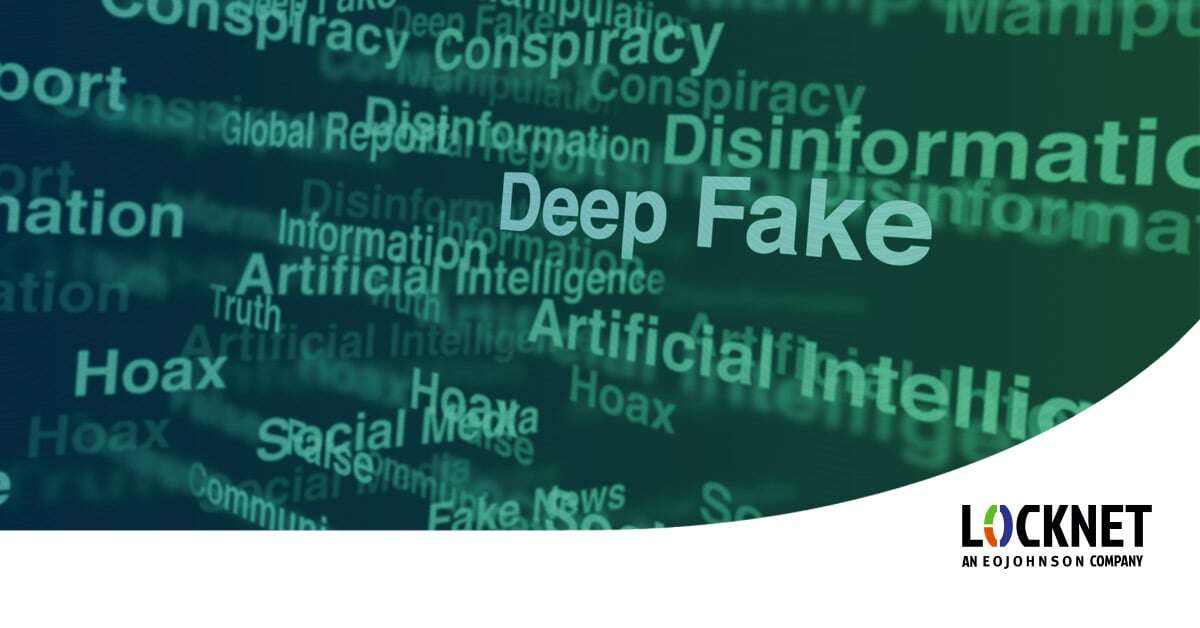Industries We Serve
World Class IT Support & Service
Real People. Right Now.
About Locknet® IT Services
From the first hello, the Locknet® team is dedicated to serving you and your needs.
Real People. Right Now.
From the first hello, the Locknet® team is dedicated to serving you and your needs.


In an age where digital technology advances at an unprecedented rate, deepfakes have emerged as a significant threat, blending the lines between reality and fiction. These AI-generated or manipulated videos convincingly portray people saying or doing things they never actually did. As the technology behind deepfakes becomes more sophisticated, so too must our methods for detecting and combating these digital deceptions. Let’s take a closer look at deepfakes, why they are a threat, and, most importantly, the strategies you can use to identify and counter them.
Deepfakes leverage artificial intelligence, particularly a subset known as deep learning, to create very realistic content. The term "deepfake" is a combination of "deep learning" and "fake," and it represents a leap forward in digital content manipulation. These AI models are trained on vast datasets of images and videos, enabling them to generate highly realistic videos where a person appears to do or say something they never did.
Initially, deepfakes were often used for harmless entertainment or satire. However, their potential for misuse quickly became evident. From political propaganda to fraudulent activities and identity theft, deepfakes pose a unique challenge to online security for individuals and businesses. As these media forms continue to proliferate, it becomes increasingly essential to equip ourselves with the tools and knowledge necessary to be successful at deepfake detection.
There are positive uses for deepfake technology like providing digital voices for people who lost theirs or special effects in film editing. But the potential negative uses are what has technology leaders, government officials, and the media concerned. Several deepfake examples have already made headlines. One of the most infamous examples is the deepfake of former U.S. President Barack Obama, in which he appears to say things he never actually did. This video was created by filmmaker Jordan Peele to demonstrate how easily deepfakes can be used to spread misinformation. Another example is the deepfake of Facebook CEO Mark Zuckerberg, where he is seen boasting about having control over "billions of people’s stolen data." Although this video was part of an art project to highlight privacy concerns, it underscored the ease with which deepfakes can be used to manipulate public perception. Yet another example we recently wrote about was Quantum AI scams, in which deepfake videos of Elon Musk and Mark Cuban were used to trick consumers and commit financial fraud.
According to security.org, there has been a huge surge in deepfake fraud hitting both individuals and businesses across the world. Here are just a few of the staggering statistics:
Deepfakes can have far-reaching consequences, impacting individuals, organizations, and even nations. Let’s dig a little deeper into the risks associated with deepfakes:
Given the risks, the need for effective deepfake detection strategies has never been more critical. Here are some basic tools and strategies you can use to help you have a critical eye and not fall victim to a deepfake.
The technical methods for deepfake detection are typically not visible to the naked eye, but they are still important to be aware of.
The legality of deepfakes is a complex issue. In many places, creating and distributing deepfakes is not explicitly illegal unless they are used for specific purposes, such as defamation, fraud, or harassment. For instance, some countries have introduced laws targeting deepfakes used in revenge porn or electoral interference, recognizing the significant harm they can cause. However, technology has outpaced legislation, leading to legal gaps worldwide. In the U.S., certain states like California have enacted laws criminalizing the use of deepfakes to deceive voters or harm individuals. In 2024, deepfake legislation is pending in at least 40 states, and 20 bills have been passed. Still, there is no comprehensive federal law addressing all aspects of deepfake creation and distribution. As the impact of deepfakes becomes more apparent, it’s likely that more robust legal measures will need to catch up to address this growing threat.
As deepfake technology continues to evolve, so will our detection strategies. The arms race between deepfake creators and detectors will likely intensify, with each side developing more sophisticated techniques. By staying aware and thinking critically, we can stay one step ahead in the fight against digital deception.
By mastering the strategies outlined in this blog and partnering with a managed IT provider who is well-versed in the latest cybersecurity threats, organizations can protect themselves against the growing threat of deepfakes and help preserve the integrity of their digital information. Let the team at Locknet Managed IT improve the security posture of your organization.
Cybersecurity

Onalaska, WI Waterloo, IA Wausau, WI Eau Claire, WI Burnsville, MN
You are now leaving locknetmanagedit.com. Please check the privacy policy of the site you are visiting.